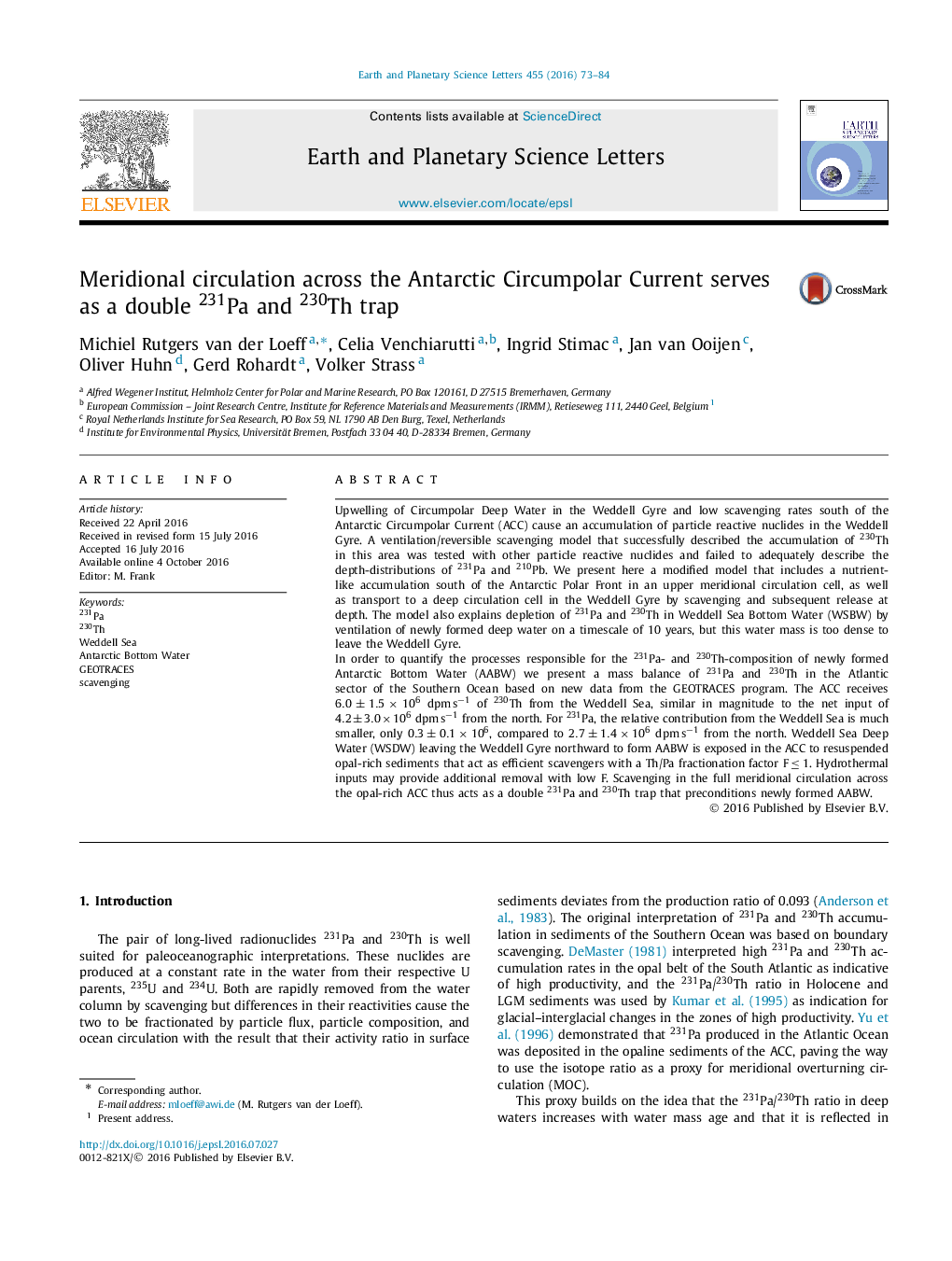| کد مقاله | کد نشریه | سال انتشار | مقاله انگلیسی | نسخه تمام متن |
|---|---|---|---|---|
| 6427217 | 1634701 | 2016 | 12 صفحه PDF | دانلود رایگان |

- Weddell Sea Bottom Water is depleted in 230Th and 231Pa but does not leave the Weddell Gyre.
- Weddell Sea Deep Water, major source of AABW, is known to be enriched in 230Th and 231Pa.
- Deep-water 231Pa and 230Th scavenging in ACC preconditions the Pa/Th signal in AABW.
- In the meridional circulation, 231Pa and 230Th are removed twice in the opal belt.
Upwelling of Circumpolar Deep Water in the Weddell Gyre and low scavenging rates south of the Antarctic Circumpolar Current (ACC) cause an accumulation of particle reactive nuclides in the Weddell Gyre. A ventilation/reversible scavenging model that successfully described the accumulation of 230Th in this area was tested with other particle reactive nuclides and failed to adequately describe the depth-distributions of 231Pa and 210Pb. We present here a modified model that includes a nutrient-like accumulation south of the Antarctic Polar Front in an upper meridional circulation cell, as well as transport to a deep circulation cell in the Weddell Gyre by scavenging and subsequent release at depth. The model also explains depletion of 231Pa and 230Th in Weddell Sea Bottom Water (WSBW) by ventilation of newly formed deep water on a timescale of 10 years, but this water mass is too dense to leave the Weddell Gyre.In order to quantify the processes responsible for the 231Pa- and 230Th-composition of newly formed Antarctic Bottom Water (AABW) we present a mass balance of 231Pa and 230Th in the Atlantic sector of the Southern Ocean based on new data from the GEOTRACES program. The ACC receives 6.0±1.5Ã106dpmsâ1 of 230Th from the Weddell Sea, similar in magnitude to the net input of 4.2±3.0Ã106dpmsâ1 from the north. For 231Pa, the relative contribution from the Weddell Sea is much smaller, only 0.3±0.1Ã106, compared to 2.7±1.4Ã106dpmsâ1 from the north. Weddell Sea Deep Water (WSDW) leaving the Weddell Gyre northward to form AABW is exposed in the ACC to resuspended opal-rich sediments that act as efficient scavengers with a Th/Pa fractionation factor Fâ¤1. Hydrothermal inputs may provide additional removal with low F. Scavenging in the full meridional circulation across the opal-rich ACC thus acts as a double 231Pa and 230Th trap that preconditions newly formed AABW.
Journal: Earth and Planetary Science Letters - Volume 455, 1 December 2016, Pages 73-84